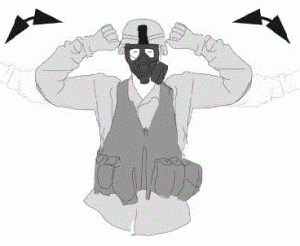Under ordinary circumstances, the U.S. Army relies on high-speed digital communications. But sometimes that is not an option, and soldiers must revert to more primitive methods.
“When electrical and/or digital means of communication are inadequate, or not available,” a new Army publication explains, messages may be transmitted “through the use of hand-and-arm signals, flags, pyrotechnics, and other visual aids.” Many of those alternate communication methods are described in Visual Signals, U.S. Army Training Circular TC 3-21.60, March 2017.
So, for example, “To signal ‘chemical, biological, radiological and nuclear attack,’ extend the arms and fists. Bend the arms to the shoulders. Repeat. (See figure 1-16.)”

Of course, hand and arm signals have limitations. For one thing, they may be misunderstood.
“Visual signals are generally contextual in nature. For example, the hand-and-arm signal for ‘take cover’ and ‘slow down’ are similar in their perspective movements, however the situation in which each is given is completely different.”
Also, “The range and reliability of visual communications are significantly reduced during periods of poor visibility and when terrain restricts observation.”
Finally, visual or gestural communications “are vulnerable to enemy interception and may be used for deception purposes,” the new Army publication said.
To increase the real and perceived benefit of research funding, funding agencies should develop challenge goals for their extramural research programs focused on the impact portion of their mission.
Without trusted mechanisms to ensure privacy while enabling secure data access, essential R&D stalls, educational innovation stalls, and U.S. global competitiveness suffers.
Satellite imagery has long served as a tool for observing on-the-ground activity worldwide, and offers especially valuable insights into the operation, development, and physical features related to nuclear technology.
This year’s Red Sky Summit was an opportunity to further consider what the role of fire tech can and should be – and how public policy can support its development, scaling, and application.